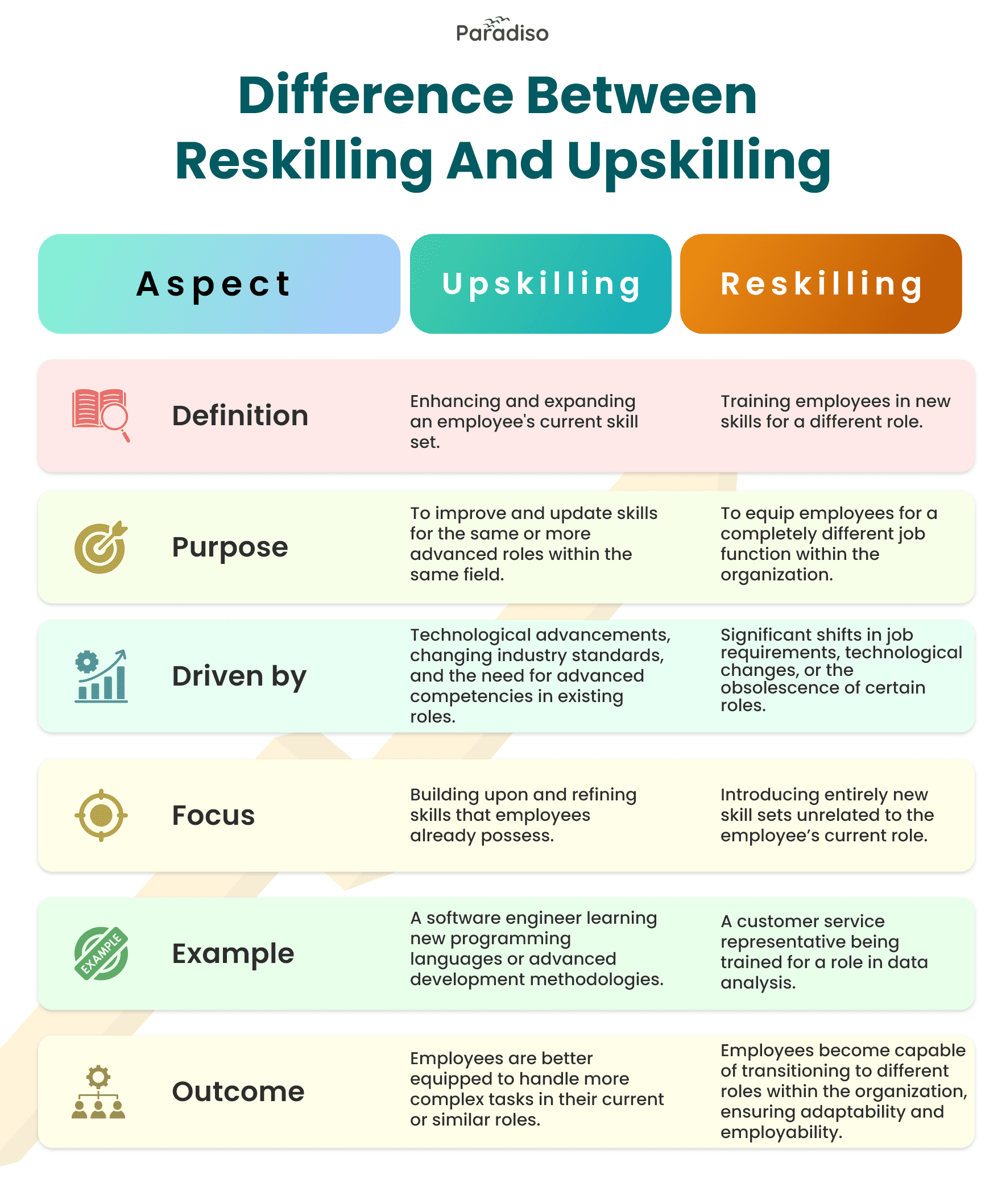What are the key benefits of upskilling and reskilling?
Enhanced Employee Retention:
Upskilling and reskilling initiatives contribute significantly to higher levels of job satisfaction and employee loyalty. When employees see that their employer is invested in their growth and career development, they are more likely to stay with the company, reducing turnover rates. This investment in employee development also fosters a strong sense of belonging and commitment among the workforce.
Lower Recruitment and Onboarding Expenses:
Focusing on the development of current employees through upskilling and reskilling can greatly reduce the costs associated with recruiting, hiring, and training new staff. It is often more cost-effective to train existing employees than to onboard new ones, especially considering the indirect costs of recruitment like time spent and potential disruption to existing workflows.
Elevated Organizational Reputation:
Companies committed to continuous employee development are often seen as employers of choice, enhancing their brand image in the eyes of potential candidates, customers, and partners. This positive reputation can lead to increased business opportunities, a stronger customer base, and an easier time attracting top talent.
Minimized Skill Shortages:
By proactively addressing the evolving skill requirements through upskilling and reskilling programs, businesses can effectively bridge skill gaps. This strategic approach ensures that the workforce is equipped with the necessary competencies to meet both current and future challenges, thereby maintaining operational efficiency and competitive edge in the market.













